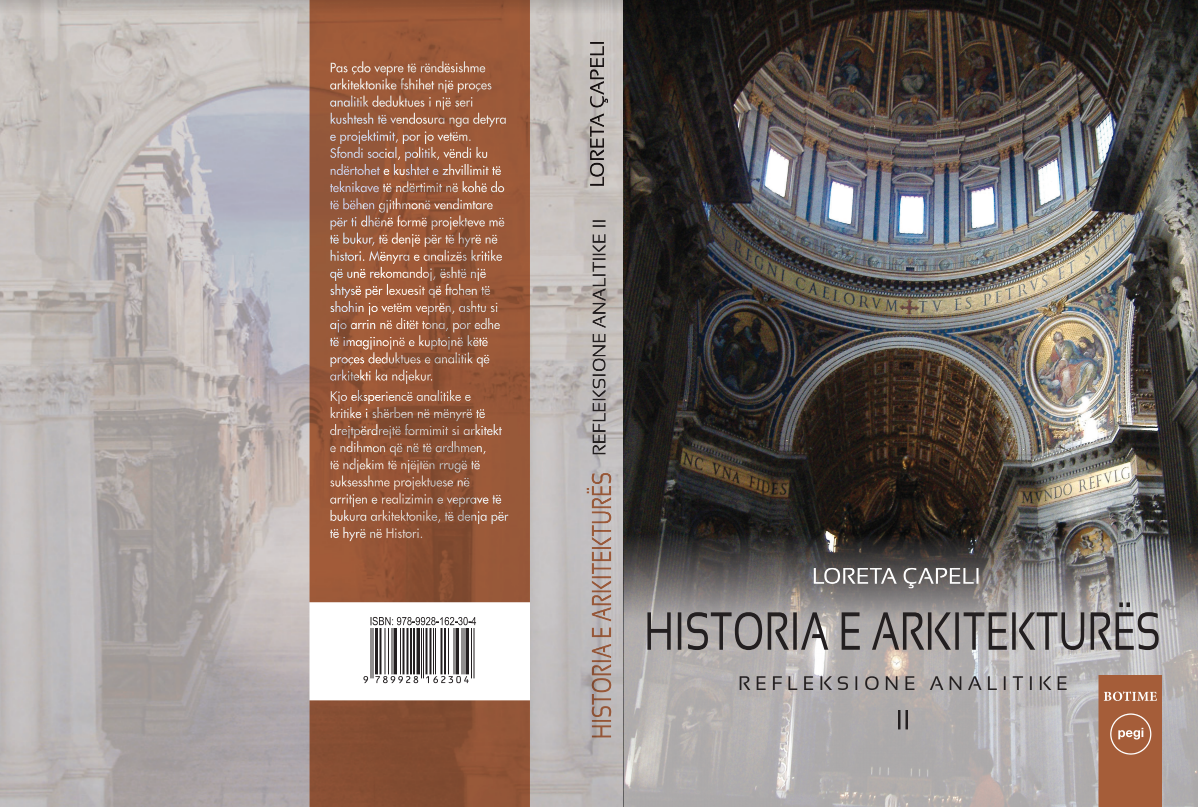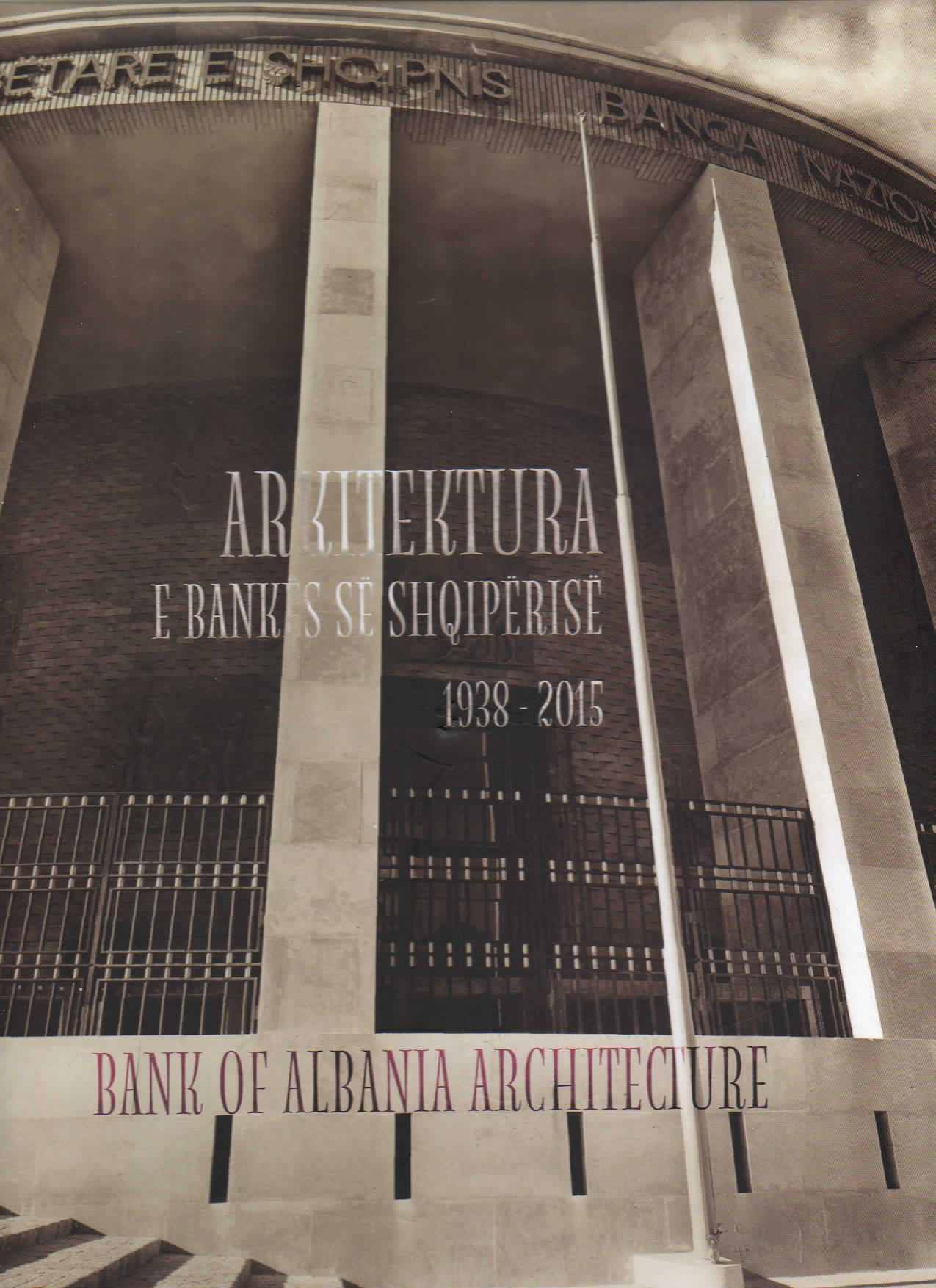
- Permbajtja
- prev
- next
- prev
- next
A brief description of you, where you work, how many years of experience you have and your area of expertise:
Loreta Çapeli is an architect and lecturer in the Faculty of Architecture and Urbanism, Polytechnic University of Tirana. She completed her studies in 1991 and since 1996 has been a lecturer in the history of Albanian and worldwide architecture at FAU, Albanian University, Metropolitan University. She has a Master of Science in Architecture, a Master of 2’nd Level in the Restoration and Documentation of Cultural Monuments and a PhD in the - Apollonia's architectonic Study and the virtual reconstruction of Antic City. Her main areas of research are the History of Architecture, both, of the World and the Albanian one, also the critics and the architectural analysis of built typologies, the re-evaluation and restoration of the monuments of cultural heritage. In her didactic and scientific activity she counts studies and scientific qualifications in France and Italy, referrals in national/ international conferences and seminars, publications and participations in scientific interuniversity projects.

Why did you choose architecture? What was the spark that led you to this profession?
More than a spark, architecture approached me as a vision, a vision of those that approach slowly, leave time to understand and then outline a human figure: tall, elegant and always in a dark suit, with sharp face and blue eyes where the depth of thought of a fulfilled character was read in all human parameters. Kolevica had always been present at family celebrations. From him I remember the sweetness and calmness of the voice in the conversations laid out with my parents, the conversations where I never heard of architecture, the forbidden argument, which in his soul, crouched in a corner at the time he was condemned, did not even dare to go out in family conversations. As a child I knew nothing about his profession, but I only heard my mother who, after he left the house, stated "how good is Petraqi". This was the vision outlined in a man, this was the vision that got the name architect, when I was an adult, in the last year of high school, after the proposal that I could apply for architecture, and the question "what does an architect do?" I received the answer that: "Uncle Petraqi is also an architect". And for me the architect and architecture were outlined in his figure. I had always painted and drawn as a child, I had a passion for technical drawing with exercises that I always solved quickly and with desire even for my sister, but then I realized that this gift of mine could lead me in the same direction with him, to whom I knew no work, but to me was the outline of passionate perfection. The time of my high school corresponded to the time of the construction of the Palace of Congresses and the Institute of Informatics, (today INIMA), objects that I saw building from the window of my house. From there I have seen everything with pleasure, from the first stages of construction to the surprising tile coverings, which at that time were fastened with metal hooks to distance themselves from the wall imitating a ventilated facade of our days. Such details came back to me in the example of what architecture meant, but then I realized that architecture would be so much more than that.
What do you think of architecture and which is the project that best represents you?
To me architecture is an outline of the architect human soul. And if this architect lives in a prosperous, humane, peaceful and bonsens society, will reflect in his projects everything through the delicacy of expression, the sensitivity and softness of forms and materials, precisely proportioned heights in relation to the place where he/she builds, but also in relation, in the first place, to the man for whom he builds. This is how I think of architecture, an easy and proportionate intervention, not arrogant and imposing, not violent and harsh, which makes you feel part of it when you see it, and makes you feel respected when you perceive it. By this I can not say that I deny the high, imposing and challenging forms of architecture. These are challenges that every architect wants to set for themselves, but if they were made in the absence of respect for the site where he builds or even in the interior, of the person for whom he builds, they would lose contextual coherence and become stagnant, turning not into a creation, but into a purpose in itself of the architect. I believe you perceived that with this I am expressing my opinion as a critic of architecture but also as a simple perceiver of it, an opinion that I did not hesitate to describe as an indignation associated with many interventions in some of our cities today, and in Tirana above all. In places like well-formed squares for decades or residential blocks studied and proportioned in time, in respect of all relevant urban norms of human life in the city, I find inappropriate objects that exceed up to 5 times or more the height of existing buildings being imposed with their violent image. It is this lack of delicacy in intervention or respect for the ancestor that best delineates the conflicting society, laden with contradictions and resentment in which we are living. And this is Architecture. It is the outline of the society that produces it. In my path as an architect I have devoted myself more to architectural analysis and criticism, deviating significantly from becoming a historian and theorist of architecture. The first book on architecture, as soon as I started my studies, at a time when nothing of world literature was found in our libraries, was lent to me by arch. Kolevica. A book on modern twentieth-century architecture, in a large format full of photos and commentary on the works of the world's great architects, would be like a good omen for the path that my career would take, that of a historian and critic of architecture. My work is analytical, it seeks to analyze, understand, perceive and reflect on architecture, on the path and architectural theory that the architect follows from the first sketches on paper, to the complete project. Analyzing and reflecting on this aspect helps you to understand a lot of the whole projective process behind a beautiful architectural work. Writing and delineating this journey for me has already turned into a passion, but it has also turned into a mission that I have undertaken to fulfill by leaving it written. A mission related to students and young people in architecture, a mission that is fulfilled to help young architects to read through my eyes, the projective process of the architect, the reason for the beauty of his work, in order to know so in the future, to repeat the same theoretical and analytical processes, to arrive at products of beautiful architectural projects. This is the work that represents me best.
What advice would you give yourself at the beginning of your career, valid even for young architects or those girls/women who want to become architects?
Travel as much as possible, look and observe architecture as much as possible and understand the theoretical and analytical process behind it. Stop and stand before any piece that you intuitively like and try to understand why it is beautiful. This will make you able to project beautifully too. While girls, even more sensitive to beauty, I would advise to reflect in architecture the tenderness and feminine sensitivity, intuition and love that only a woman knows how to convey. Do not try to imitate the great architecture of contemporary masters, but read deep into their creative spirit to find what only a woman can design: delicacy and formal ease.

